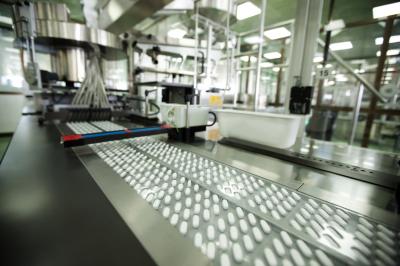May 28, 2014

May 28, 2014

 In my previous blog I re-visited key GAMP® 5 concepts as they relate to establishing a compliant system validation methodology. My next few blogs will focus on each of these concepts in more detail. Today’s entry will focus on the first of these concepts, Product and Process Understanding.
In my previous blog I re-visited key GAMP® 5 concepts as they relate to establishing a compliant system validation methodology. My next few blogs will focus on each of these concepts in more detail. Today’s entry will focus on the first of these concepts, Product and Process Understanding.
As I stated in my last blog, understanding the product manufacturing or business process for which a computer system is being implemented is a critical first step to ensure the system meets its intended purpose. Adequate understanding of the supported process is a key factor in developing complete, clear, and relevant system requirements. Process knowledge and understanding is also critical in performing science-based risk assessments for the planned system. This may require a different focus depending upon the category of system being implemented.
Process Control Systems
As outlined in the revised FDA Guidance for Industry on Process Validation: General Principles and Practices, January 2011, process knowledge and understanding is the basis for designing effective process control strategies for unit operations as well as the overall process. Special attention may be required for operational limits and in-process monitoring. Similarly the International Conference on Harmonization Guideline for Pharmaceutical Development Q8, November 2005, discusses the importance of identifying Critical Process Parameters (CPPs) that must be controlled in order to achieve key Critical Quality Attributes (CQAs) of the product being produced. Knowing which parameters of the process (temperature, pressure, pH, processing time, etc.) over what specified range is a first step in designing an effective automated control system.
Laboratory Analytical Systems
While understanding Critical Process Parameters is important to the design and development of process control systems, understanding of Critical Quality Attributes is often a key step in identifying the types and capabilities of analytical systems required to support new products. Specific quality attributes will determine needed analytical instrumentation and associated data acquisition and analysis software. Analytical methods will be the primary source of system related process requirements. As with process control systems, there may also be specific data retention and reporting requirements associated with the systems employed. Electronic record and signature aspects may be more critical with laboratory systems than with automation systems providing direct real time control of manufacturing equipment.
Transaction Based Systems
This classification of systems implies those supporting higher level workflow related business processes that might range from electronic batch record, to laboratory information, to quality workflow, to high level production planning processes. Understanding critical aspects of these higher level business processes would focus primarily on specific data and information being generated and managed by the associate computer system. Specific questions to ask might include:
The use of business process flows is often a good mechanism to clearly outline and understand critical data management aspects of the overall process being supported.
Subject matter experts who have the appropriate process knowledge are key participants in the identification of process critical requirements. This understanding provides key input to the system development life cycle, which we’ll discuss in a subsequent blog posting.
Learn more about ProPharma Group's Computer Systems Validation services.
Contact us to get in touch with Mike and our other subject matter experts for a customized presentation.

March 5, 2014
Today, Bob Beall is back with the next gate in the Nine Gate Transfer Process. If you have missed any of the previous steps in this process, you can review them here: Gate 1: Assessment Gate 2:...

May 7, 2014
As the pharmaceutical supply chain evolves, at some point product/technology transfers will become part of the improvement process. When transferring production from site to site, an array of complex...
January 13, 2021
As you plan for an upcoming Tech Transfer, have you considered if you are appropriately prepared to conduct an analytical method transfer? With the simple analytical method transfer checklist...